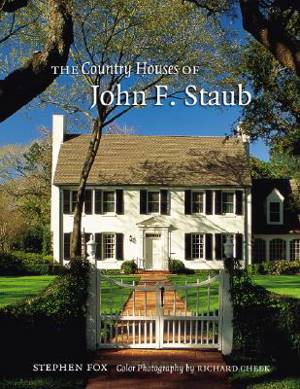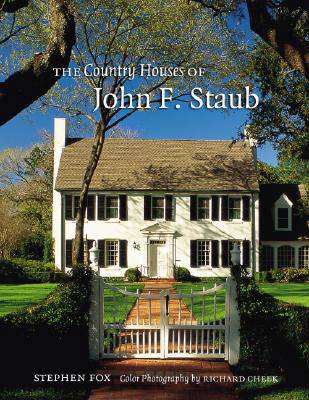
- Retrait gratuit dans votre magasin Club
- 7.000.000 titres dans notre catalogue
- Payer en toute sécurité
- Toujours un magasin près de chez vous
- Retrait gratuit dans votre magasin Club
- 7.000.000 titres dans notre catalogue
- Payer en toute sécurité
- Toujours un magasin près de chez vous
Récompenses
Description
In the early 1920s, architect John F. Staub, a native of Knoxville, Tennessee, who had studied at MIT and worked in New York, came to the burgeoning city of Houston as an assistant to nationally prominent architect Harrie T. Lindeberg. Staub was charged with administering construction of three houses designed by Lindeberg for members of the city's rapidly emerging elite. He would go on to establish one of the most influential architectural practices in Houston, where he would remain until his death in 1981. Over four decades, Staub designed grand houses in such communities as Shadyside, Broadacres, and, perhaps most notably, River Oaks. His clients included the Hoggs, for whom he created Bayou Bend; the Mastersons, his clients for Rienzi; and members of the Wiess, Cullen, Farish, Welder, Fay, and Elkins families. Although Staub also completed commissions for clients elsewhere in Texas and the United States, it was primarily in Houston that his work and influence took root. This ambitious study of Staub's work by architectural historian Stephen Fox goes beyond a description of Staub's houses. Fox analyzes the roles of space, structure, and decoration in creating, defining, and maintaining social class structures and expectations and shows how Staub was able to incorporate these elements and understandings into the elegant buildings he designed for his clients. In the process, he contributes greatly to a fuller understanding of Houston's emergence as a premier American city. Stunning color images by architectural photographer Richard Cheek, combined with Fox's well-grounded and expansive thesis, create a volume that will enchant, inform, and entertain. Students and aficionados of American domestic architecture of the 1920s, '30s, '40s, and '50s will appreciate the wealth of material, and the volume's contribution to architectural history and the sociology of architecture will commend itself to readers across the nation.
Spécifications
Parties prenantes
- Auteur(s) :
- Editeur:
Contenu
- Nombre de pages :
- 388
- Langue:
- Anglais
- Collection :
- Tome:
- n° 11
Caractéristiques
- EAN:
- 9781585445950
- Date de parution :
- 28-09-07
- Format:
- Livre relié
- Format numérique:
- Genaaid
- Dimensions :
- 235 mm x 312 mm
- Poids :
- 2658 g









